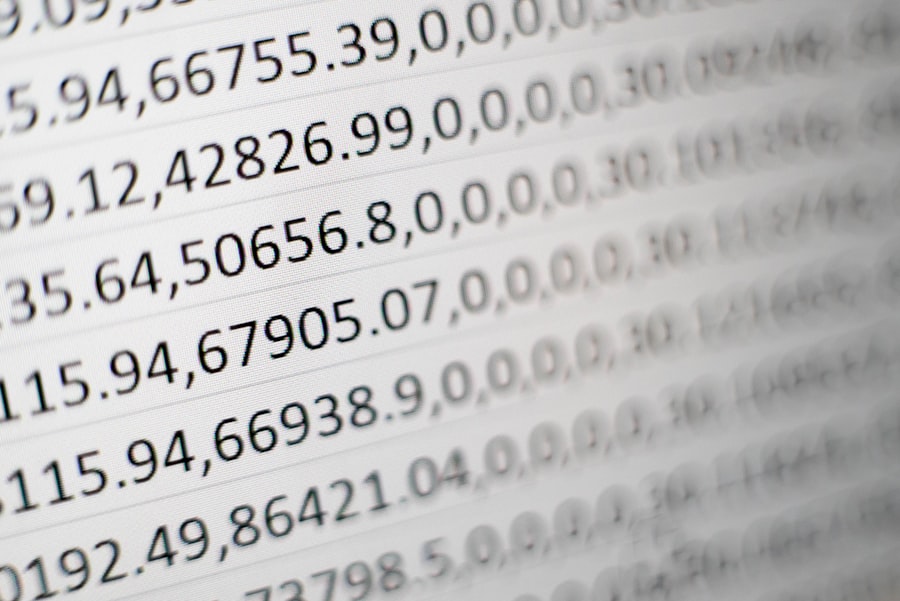Environmental Impact Assessments (EIA) are a crucial tool in environmental protection and sustainable development. EIA is a process that evaluates the potential environmental impacts of a proposed project or development before it is implemented. It helps decision-makers identify and mitigate any adverse effects on the environment, as well as consider alternative options that may have less impact.
The importance of EIA cannot be overstated. It ensures that development projects are carried out in an environmentally responsible manner, taking into account the potential impacts on ecosystems, biodiversity, air and water quality, and human health. By identifying and addressing these impacts early on, EIA helps prevent irreversible damage to the environment and promotes the sustainable use of natural resources.
Key Takeaways
- Environmental Impact Assessments (EIA) are important tools for evaluating the potential environmental impacts of development projects.
- Optimizing EIA processes can improve efficiency and accuracy in data collection, leading to better decision-making and environmental protection.
- SMS-iT CRM is a software solution that can streamline EIA data collection and management.
- SMS-iT CRM’s data collection features, such as customizable forms and offline data collection, can improve EIA efficiency and reduce errors.
- Benefits of using SMS-iT CRM for EIA data collection include increased data accuracy, faster data processing, and improved collaboration among team members.
The Importance of Optimizing EIA Processes
While EIA is a valuable tool for environmental protection, the process itself can be complex and time-consuming. There are often challenges in terms of data collection, analysis, and stakeholder engagement. These challenges can lead to delays in project implementation and may result in incomplete or inaccurate assessments.
Optimizing EIA processes is crucial to overcome these challenges and ensure that the assessments are conducted efficiently and effectively. By streamlining data collection, analysis, and stakeholder engagement, EIA can be carried out in a more timely manner, allowing for better decision-making and more sustainable development outcomes.
The Role of SMS-iT CRM in EIA Data Collection
SMS-iT CRM is a powerful tool that can greatly enhance the efficiency of EIA data collection. It is a cloud-based customer relationship management system that allows for seamless data collection, storage, and analysis. With its user-friendly interface and customizable features, SMS-iT CRM can be tailored to meet the specific needs of EIA processes.
SMS-iT CRM can be used to collect data from various sources, including field surveys, remote sensing technologies, and public consultations. It allows for real-time data entry and synchronization, ensuring that the most up-to-date information is available for analysis. The system also provides advanced data visualization and reporting capabilities, making it easier to identify trends and patterns in the data.
How SMS-iT CRM’s Data Collection Features Improve EIA Efficiency
SMS-iT CRM offers a range of data collection features that can significantly improve the efficiency of EIA processes. These features include:
1. Mobile data collection: SMS-iT CRM allows for data collection using mobile devices, such as smartphones and tablets. This eliminates the need for paper-based surveys and manual data entry, saving time and reducing the risk of errors. Field workers can collect data in real-time, even in remote locations, and synchronize it with the central database.
2. Customizable forms: SMS-iT CRM allows users to create custom forms for data collection. This means that EIA practitioners can design forms that are tailored to their specific needs, ensuring that all relevant information is captured. The system also supports multimedia data collection, such as photos and videos, which can provide valuable visual evidence for impact assessments.
3. Offline data collection: SMS-iT CRM has offline capabilities, allowing users to collect data even in areas with limited or no internet connectivity. Field workers can collect data offline and synchronize it with the central database once they have access to an internet connection. This ensures that data collection can continue uninterrupted, regardless of the location.
The Benefits of Using SMS-iT CRM for EIA Data Collection
The use of SMS-iT CRM for EIA data collection offers several benefits, including cost savings, time savings, and improved accuracy and reliability of data.
1. Cost savings: By streamlining data collection processes and eliminating the need for paper-based surveys, SMS-iT CRM can help reduce costs associated with printing, storage, and transportation of survey forms. It also reduces the need for manual data entry, saving on labor costs.
2. Time savings: SMS-iT CRM allows for real-time data collection and synchronization, eliminating the need for manual data entry and reducing the time required for data analysis. This allows for faster decision-making and more timely implementation of projects.
3. Improved accuracy and reliability of data: SMS-iT CRM’s customizable forms and multimedia data collection capabilities ensure that all relevant information is captured accurately. The system also provides validation rules and error checks, reducing the risk of data entry errors. This improves the reliability of the data and enhances the credibility of the EIA process.
Case Studies: Successful EIA Optimization Using SMS-iT CRM

There have been several successful case studies where SMS-iT CRM has been used to optimize EIA processes. These case studies demonstrate the effectiveness of the system in improving efficiency and ensuring better environmental outcomes.
One such case study is the use of SMS-iT CRM in a large-scale infrastructure project in a developing country. The project involved the construction of a new highway through a sensitive ecological area. By using SMS-iT CRM for data collection, the project team was able to streamline the EIA process and identify potential impacts more efficiently. This allowed for better decision-making and the implementation of mitigation measures to minimize environmental damage.
Another case study involved the use of SMS-iT CRM in a renewable energy project. The project aimed to install a wind farm in a coastal area known for its rich biodiversity. By using SMS-iT CRM for data collection, the project team was able to collect accurate and reliable information on bird migration patterns and nesting sites. This allowed for better planning and design of the wind farm, minimizing potential impacts on bird populations.
Tips for Maximizing the Potential of SMS-iT CRM in EIA Data Collection
To maximize the potential of SMS-iT CRM in EIA data collection, it is important to follow best practices and implement effective strategies. Here are some tips for getting the most out of the system:
1. Define clear objectives: Before using SMS-iT CRM for EIA data collection, it is important to define clear objectives and identify the specific data that needs to be collected. This will help ensure that the system is configured to meet the specific needs of the project.
2. Train users: Provide comprehensive training to all users of SMS-iT CRM, including field workers, data analysts, and decision-makers. This will ensure that everyone understands how to use the system effectively and can make the most of its features.
3. Regularly update and maintain the system: Regularly update and maintain SMS-iT CRM to ensure that it is running smoothly and that all data is secure. This includes updating software, backing up data, and monitoring system performance.
Best Practices for EIA Data Collection Using SMS-iT CRM
To ensure effective EIA data collection using SMS-iT CRM, it is important to follow best practices. Here are some best practices to consider:
1. Standardize data collection protocols: Develop standardized protocols for data collection to ensure consistency and comparability of data. This includes defining clear definitions and measurement units for variables, as well as establishing quality control procedures.
2. Engage stakeholders: Involve stakeholders in the data collection process to ensure that their perspectives and concerns are taken into account. This can be done through public consultations, focus group discussions, or surveys conducted using SMS-iT CRM.
3. Conduct regular data quality checks: Regularly check the quality of the collected data to ensure accuracy and reliability. This includes conducting validation checks, cross-checking data with other sources, and resolving any discrepancies or errors.
Future Developments in EIA Optimization Using SMS-iT CRM
The future of EIA optimization using SMS-iT CRM looks promising, with several developments on the horizon. These developments aim to further improve the efficiency and effectiveness of EIA processes, and include:
1. Integration with remote sensing technologies: SMS-iT CRM is expected to integrate with remote sensing technologies, such as satellite imagery and aerial surveys. This will allow for more accurate and comprehensive data collection, particularly for large-scale projects.
2. Artificial intelligence and machine learning: SMS-iT CRM is likely to incorporate artificial intelligence and machine learning algorithms to automate data analysis and decision-making processes. This will help identify patterns and trends in the data more efficiently, allowing for better predictions of potential impacts.
3. Enhanced stakeholder engagement features: SMS-iT CRM is expected to include enhanced features for stakeholder engagement, such as online forums and social media integration. This will facilitate greater participation and collaboration among stakeholders, leading to more informed decision-making.
The Value of SMS-iT CRM in EIA Data Collection and Environmental Protection
In conclusion, SMS-iT CRM is a valuable tool for optimizing EIA processes and improving environmental protection outcomes. By streamlining data collection, analysis, and stakeholder engagement, SMS-iT CRM can help ensure that EIA assessments are conducted efficiently and effectively.
The use of SMS-iT CRM offers several benefits, including cost savings, time savings, and improved accuracy and reliability of data. It has been successfully used in various case studies to optimize EIA processes and achieve better environmental outcomes.
As future developments in EIA optimization using SMS-iT CRM continue to evolve, the potential for improving EIA processes and environmental protection will only increase. It is clear that SMS-iT CRM has a significant role to play in ensuring sustainable development and the protection of our environment.
If you’re interested in learning more about how SMS-iT CRM’s data collection features can optimize environmental impact assessments, you might also want to check out this related article on SMS-iT’s blog: “SMS-iT CRM Tools: Streamlining Data Collection for Effective Decision-Making.” This article delves into the various tools and functionalities offered by SMS-iT CRM that can enhance the data collection process, ultimately leading to more accurate and efficient environmental impact assessments. To read more about it, click here.
FAQs
What is an Environmental Impact Assessment (EIA)?
An Environmental Impact Assessment (EIA) is a process that evaluates the potential environmental impacts of a proposed project or development. It is used to identify and assess the potential environmental effects of a project, and to propose measures to mitigate or avoid those effects.
What is SMS-iT CRM?
SMS-iT CRM is a customer relationship management software that helps businesses manage their customer interactions and data. It provides a range of features for data collection, analysis, and reporting, which can be used to optimize environmental impact assessments.
How can SMS-iT CRM be used to optimize environmental impact assessments?
SMS-iT CRM’s data collection features can be used to gather and analyze data related to the environmental impacts of a proposed project or development. This data can be used to identify potential environmental risks and to propose measures to mitigate or avoid those risks. SMS-iT CRM can also be used to track and monitor the implementation of these measures, and to report on the effectiveness of the EIA process.
What are the benefits of using SMS-iT CRM for environmental impact assessments?
Using SMS-iT CRM for environmental impact assessments can help businesses and organizations to:
- Collect and analyze data more efficiently and accurately
- Identify potential environmental risks and propose effective mitigation measures
- Track and monitor the implementation of mitigation measures
- Report on the effectiveness of the EIA process
- Improve stakeholder engagement and communication
What types of businesses and organizations can benefit from using SMS-iT CRM for environmental impact assessments?
Any business or organization that is involved in projects or developments that may have environmental impacts can benefit from using SMS-iT CRM for environmental impact assessments. This includes industries such as construction, mining, energy, and transportation, as well as government agencies and non-profit organizations.







